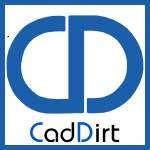 Back in May Google got major attention with this video from Google I/O that outlined Google's attempt to recreate communication via the Internet called Google Wave. Well 100's of 1000's of users are now playing around with this limited preview and I was very fortunate to get invited by a friend and wanted to share my thoughts early in my testing.
Back in May Google got major attention with this video from Google I/O that outlined Google's attempt to recreate communication via the Internet called Google Wave. Well 100's of 1000's of users are now playing around with this limited preview and I was very fortunate to get invited by a friend and wanted to share my thoughts early in my testing.
For those of you who didn't spend the 80 minutes watching the spot from Google I/O, Google Wave is a live collaborative environment that incorporates many of technologies we use everyday into one sandbox. Think of one place to email, instant message and create collaborative, topical conversation in a threaded live document in the cloud. Sounds too good to be true, huh? Well, it is early and like many new technologies or services, Google Wave is still in the "Geek Stage" so many of it's users are people who enjoy the bleeding edge. So I thought as a good measure of the general public's ability to understand Google Wave I would try to explain this to my wife who is simply a user of technology and really doesn't care how it works, just that it does. She nodded in agreement that it made sense but I still felt that even though it made sense she would probably not be the first one to jump on the Wave.
E-mail but Not:
Similar to email, Wave has an inbox, folders and even an indication that new activity has occurred, however there are some fundamental differences that make Wave a much better tool for communicating with a group of recipients. When trying to send a message in email to your team, you add them to the "To:" area and then you type the message, essentially sending a read-only document to them for review. When they reply, they must reply to everyone in the team in order to keep the conversation contiguous. The problem grows when you want to add people to this conversation.
Wave is different in the conversation is centralized and it's recipients gather around the content, keeping it in sync with everyone in the group while extending editing to everyone. This makes the conversation resemble that of face to face meetings while ensuring everyone leaves with notes! Ever compare notes after a roundtable meeting only to find someone wrote something down you forgot?
IM but Not:
Whether it is Skype, AOL, Yahoo, GTalk, or Live Messenger, instant messaging has become a very common communication tool within teams due to the real-time nature of these services unlike that of email. IM is still mostly a 1:1 real-time tool, allowing two parties to chat and even video conference on a whim. Group chat can also be a productive way to sync teams but sometimes that content is not captured and has limited content creation tools available.
Collaboration is enhanced further in Wave by also making editing real-time. If more than one individual is editing the wave, others in the wave can watch them edit and even type each character in the instant it is happening in the Wave. This essentially brings chat into the communication when it makes sense; within the working environment about the topic at hand.
Gadgets, Bots and Extensions:
One of the things that makes the platforms successful is their ability to be extended through community need and programming. If you look at successful platforms in technology today, Firefox, iPhone, most computer operating systems, they all have a common thread; extensibility through applications. Gadgets are essentially embedded apps that perform a multitude of services as a feature of the conversation. I tested a few of these: Google Maps (maps with collaborative markup), Trippy (trip planning), Napkin (napkin sketching) all which extend the platform for various collaborative specialties. I can imagine once this platform is out, this is an area that 3D might be able to take into account, building interactive 3D markup and viewing gadgets like eDrawings (hint hint SolidWorks!).
Bots, on the other hand, can be added to the wave, similar to a contact, and will perform various actions based on activities happening within the wave. I have used four to date, Tweety (integrated twitter client) and Bitly bot (integraded Bit.ly shortening for URLs, Notify (Email notification) and XMPP (IM notification). In the 80-minute video, Google shows one that does real-time language translation while multiple parties talk called Rosy.
The Verdict:
It is still very early but after using it for the past week I really don't ever want to use email again. I use Yammer as an internal "CB radio" to allow group chat, fact finding and short topic conversation. Other projects are buried in a number of local tools that are shared via email which is slow hard to keep in sync with everyone involved. I can imagine using this platform for all sorts of projects but see a future as a cloud-based platform for all sorts of industries to build in real-time collaborative extensions into tools like CAD, Simulation, PDM/PLM and the like. The point is, providing a platform like Google Wave that could make design teams more cohesive and in sync, the more efficient they become. ~Lou
Since the launch of Google Wave's preview, one of the major gripes was the fact that you needed to be invited in or have an account to participate in a Wave discussion. At the beginning of the month, Google announced an embed API that allows you to embed a Wave into any website and select who can see it.





